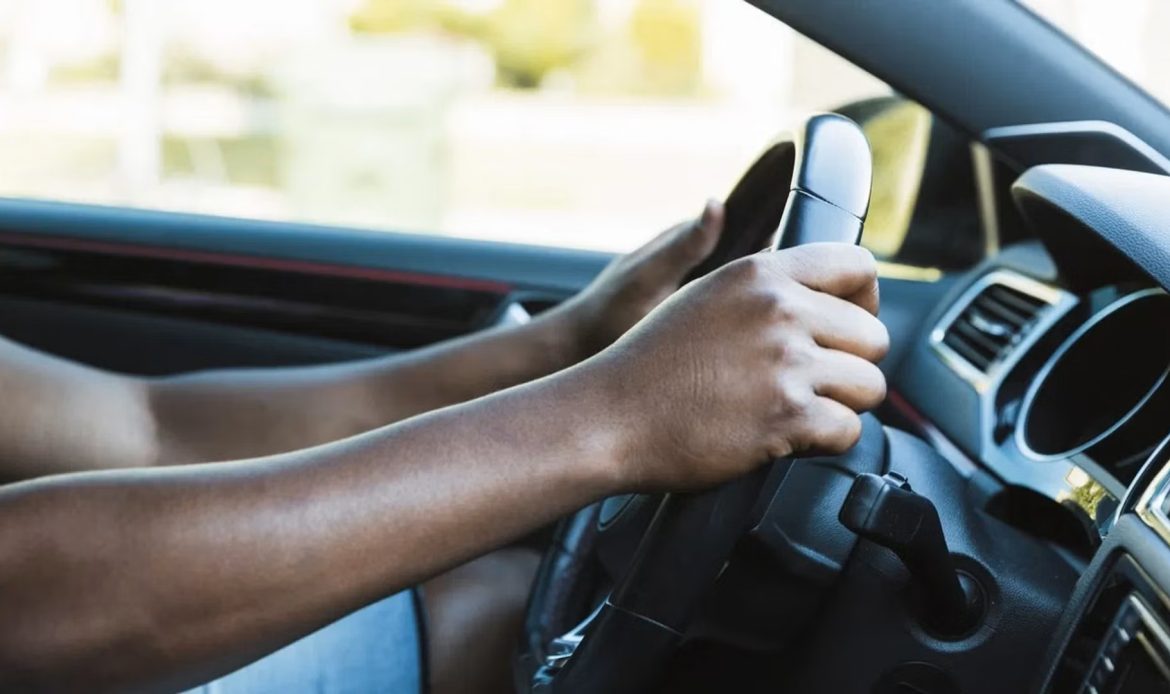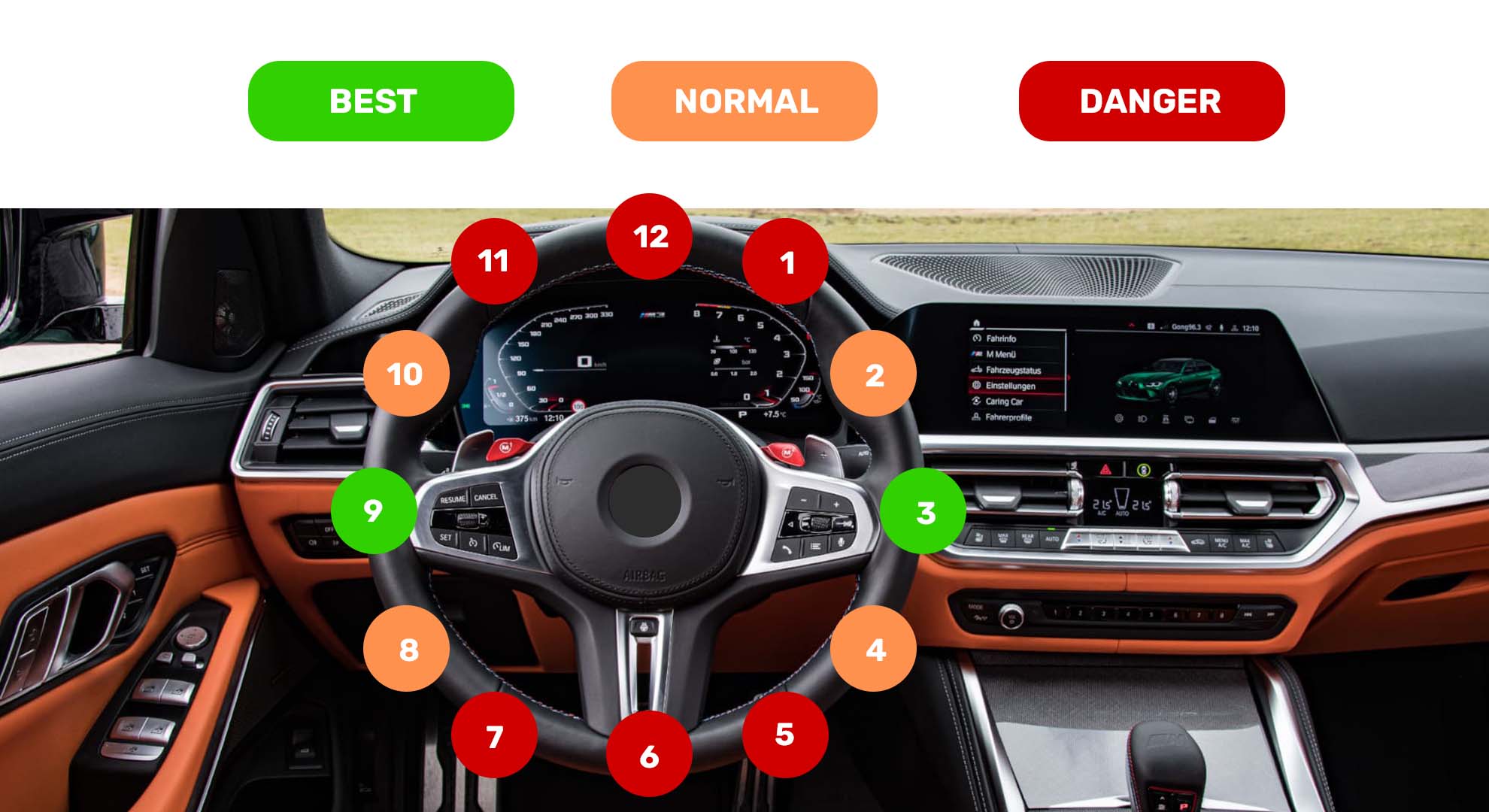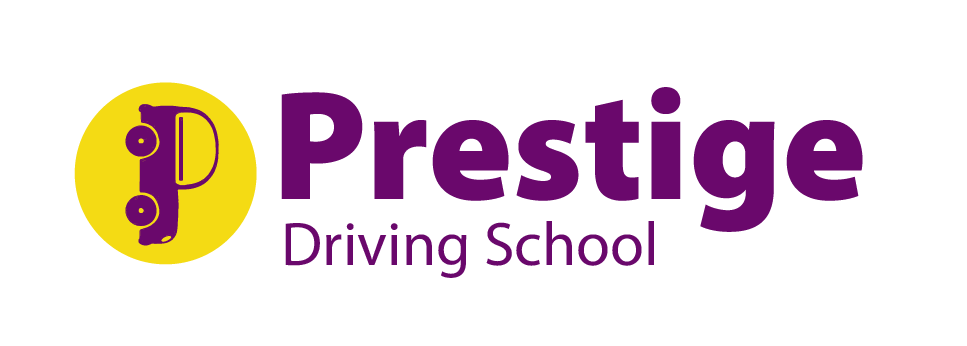Introduction
For many years, driving instructors, manuals, and even parents taught new drivers to place their hands at the 10-2 position on the steering wheel — a method that was widely accepted as best practice. This hand placement was considered ideal for maintaining control and executing precise maneuvers on the road.
However, as vehicle technology has evolved — particularly with the introduction of airbags and electronic power steering systems, this once-standard advice has become outdated and even dangerous.
Today, driving safety experts around the world, including organisations like the National Highway Traffic Safety Administration (NHTSA) and road safety boards across Africa, recommend a new hand placement, which is 9-3.
In this article, we will explore:
Let’s dive into the modern approach to steering safely.
Why the 10-2 position is outdated
The 10-2 hand position dates back to the mid-20th century when cars lacked power steering and safety systems were minimal or non-existent. Back then, drivers needed a wider grip for mechanical advantage, especially in vehicles with manual steering.
However, today’s cars are different:
- Power steering requires far less physical effort.
- Airbag systems deploy from the center of the steering wheel.
- Steering wheels are smaller and more sensitive, offering better responsiveness.
When an airbag deploys, it does so with an explosive force — typically within 20 to 50 milliseconds — inflating at speeds of up to 300 km/h (186 mph). If your hands are at 10-2, they are directly in the path of the deploying airbag.
This can result in:
- Broken fingers, wrists, or arms.
- Facial lacerations caused by arms or hands being pushed back.
- Eye injuries.
- Disorientation in critical seconds following a crash.
- As a result, the 10-2 position is now considered hazardous in modern. vehicles.
The 9-3 position: A modern safety standard
What does 9-3 mean?
- Think of your steering wheel like the face of a clock:
- The left hand goes on the 9 o’clock position.
- The right hand goes on the 3 o’clock position.
This placement provides maximum control while keeping your hands safely outside the trajectory of an airbag deployment.

Advantages of the 9-3 position
1. Reduces injury risk
The most critical reason to adopt the 9-3 position is safety. This position ensures your arms are not in the path of the airbag, significantly lowering the risk of upper body injury.
2. Improved steering control
At 9-3, your hands are balanced evenly on either side of the wheel, allowing for smoother turns, better correction control, and precise movement, especially during emergency maneuvers or lane changes.
3. Better ergonomics
This is a natural and relaxed arm position, which reduces shoulder and wrist fatigue on longer drives. It also gives you better reach to dashboard controls, wipers, and indicators without having to reposition your hands.
4. Better leverage and reaction time
In critical situations, such as avoiding an obstacle or reacting to sudden braking ahead, the 9-3 position allows you to make quicker and sharper steering inputs.
What about 8-4?
Some modern cars with extremely advanced driver assistance systems (ADAS) and adaptive steering allow for a relaxed position like 8-4, especially during highway cruising. However, 8-4:
- Offers less precision during tight maneuvers.
- Is not ideal for emergency steering.
While not dangerous, it should be considered a secondary or temporary hand position, not a primary one for day-to-day driving or during city traffic.
Visual Guide: Ranking steering wheel hand positions
Below is a breakdown of various hand positions, based on control, safety, and airbag risk:
| Clock Position | Classification | Safety Notes |
| 9-3 | ✅ Best | Most recommended by safety experts. Ensures full control and airbag safety. |
| 8-4 | 🟠 Acceptable | Comfortable for cruising but less ideal for quick maneuvers. |
| 10-2 | 🔴 Dangerous | High risk of injury from airbag deployment. Outdated advice. |
| 12 o’clock | ⛔ Very Dangerous | Common with one-handed driving; significantly reduces control. |
| 6 o’clock | ⛔ Very Dangerous | Often used when tired or distracted; provides almost no control. |
| 1-5 / 11-7 | 🔴 Dangerous | Awkward positions that reduce both control and airbag safety. |

Steering techniques to combine with proper hand placement
Correct hand placement is just one part of safe steering. To get the most out of the 9-3 position, it is recommended to combine it with these key techniques:
1. Use the push-pull steering method
Instead of crossing your arms over the wheel, use push-pull, also called shuffle steering. This involves:
- One hand pushing the wheel up.
- The other pulling it down.
This method keeps your arms below the airbag zone and maintains balance.
2. Adjust your seat properly
- Sit upright, with your back against the seat.
- Position the seat so your elbows are slightly bent when holding the wheel.
- Your chest should be at least 25 cm (10 inches) away from the steering wheel airbag.
3. Avoid one-handed driving
While it may seem comfortable, driving with one hand significantly limits your response time and control, especially in emergencies.
Training for real-world safety
At Prestige Driving School, we don’t just teach our students to pass driving tests, we prepare them to be safe, confident, and competent drivers for life.
We incorporate the latest traffic safety guidelines, including:
- Correct hand positioning
- Defensive driving
- Emergency handling
- Modern vehicle features and limitations
Whether you’re a new learner or updating your skills, we’ll ensure you’re trained with techniques relevant to today’s vehicles and road environments.
Conclusion: Safety begins with proper habits
The driving habits we form early on often stay with us for life. Understanding the importance of hand placement and adapting to modern safety standards is essential for every driver.
By shifting from the outdated 10-2 method to the modern 9-3 position, you are:
- Protecting yourself from serious injury.
- Improving your control in all driving conditions.
- Complying with up-to-date driving safety best practices.
At Prestige Driving School, we believe that informed drivers are safer drivers. This is why our instructors emphasize current and research-backed techniques that reflect modern realities — not outdated traditions.



